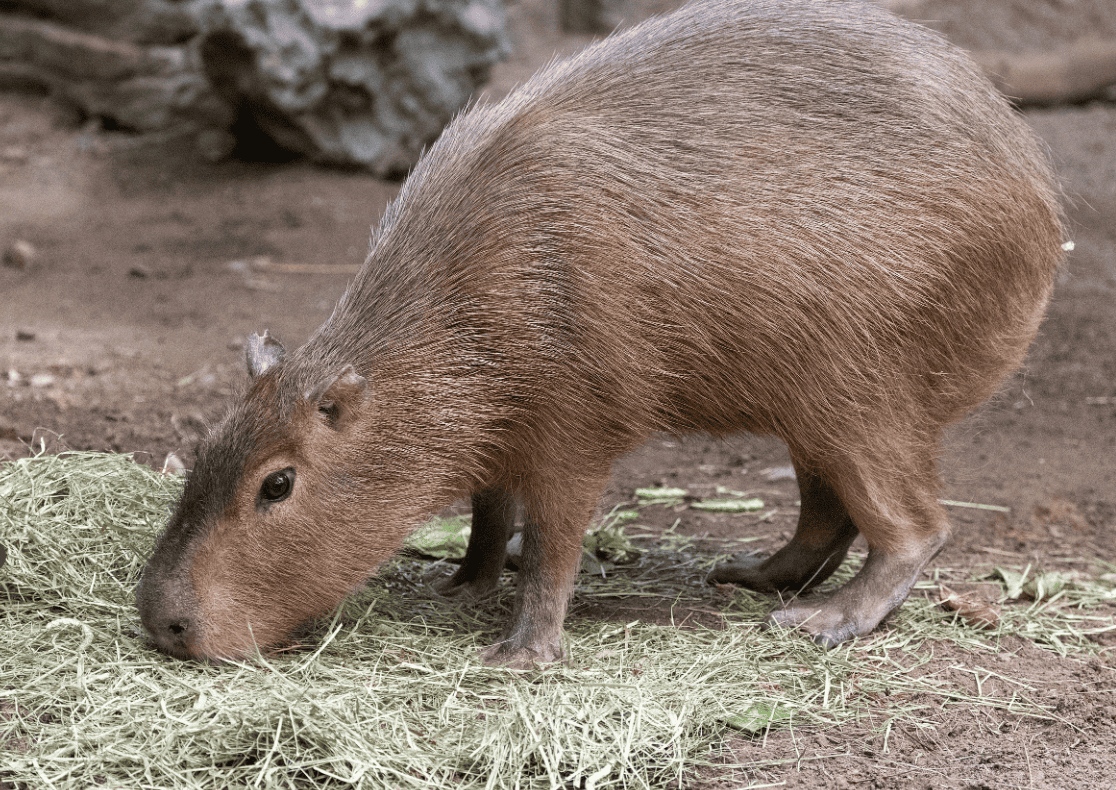Page Contents:
How Much Does a Capybara Cost?
The cost of a capybara can vary widely depending on a variety of factors, including the source, location, and whether it’s obtained as a pet or for other purposes.
With that being considered the price of a Capybara can range from $500 to $3,000 dollars.
However, it’s important to note that the initial cost is just one aspect of owning a capybara. These animals have unique needs, including a large living space, a proper diet, and companionship.
Capybaras are exotic pets and may not be legal to own in all areas. Additionally, they have very specific care requirements that potential owners need to consider.
If you’re looking to purchase a capybara, it’s essential to find a reputable breeder or seller who adheres to ethical and legal standards.
Before considering a capybara as a pet, make sure to research local laws and regulations, and consult with exotic animal veterinarians to ensure that you can provide appropriate care for these unique creatures. Additionally, consider adopting from a rescue or sanctuary that specializes in exotic animals.
Can You Have a Capybara as a Pet?
Yes, it is possible to have a capybara as a pet, but there are several important considerations to keep in mind.
Here are some key points to remember:
Legal Considerations: Check the local laws and regulations in your area regarding the ownership of exotic pets, including capybaras. In some states, it may be illegal to keep them as pets.
Space Requirements: Capybaras are the largest rodents in the world and need a significant amount of space. They are semi-aquatic and require access to water, as well as a spacious outdoor enclosure. Adequate space is crucial for their well-being.
Specialized Diet: Capybaras have specific dietary needs, and providing the right nutrition is essential for their health. They are herbivores and require a diet that includes a variety of grasses, vegetables, and some fruits.
Medical Specialization: Finding a veterinarian with experience in treating exotic animals, including capybaras, is crucial. Regular veterinary care is necessary to monitor their health and address any potential issues.
Hygiene and Maintenance: Capybaras can be messy, and their enclosures require regular cleaning and maintenance. Ensuring a clean and comfortable living environment is essential for their well-being.
Before deciding to get a capybara as a pet, thoroughly research their care requirements, and consider whether you can meet these needs responsibly. It’s also important to explore alternative options, such as supporting capybara rescues or sanctuaries where animals in need of homes can be adopted.
Where Can You Own a Capybara?
The legality of owning a capybara as a pet varies by location, and it’s crucial to research and understand the local laws and regulations in your area.
For example, Capybaras are prohibited as pets in California and Georgia, but they are permitted in Texas, Pennsylvania, and New York. However, local regulations may apply, and, for instance, capybaras are considered illegal pets in the five boroughs of New York City. In several states, including Texas, Washington, North Carolina, Arizona, Arkansas, Indiana, Florida, and Tennessee, owning a capybara is legally allowed. It’s important to be aware of both state and local regulations when considering capybaras as pets.
In many places, owning a capybara may be subject to strict regulations or may be prohibited entirely. Some regions classify capybaras as exotic animals and may require special permits for their ownership.
Before considering a capybara as a pet, check with local authorities, such as wildlife agencies or departments of natural resources, to determine the legality and any specific requirements for ownership.
Additionally, local municipalities may have their own rules regarding exotic pets, so it’s essential to check with them as well.
In some cases, people may obtain capybaras for educational or therapeutic purposes, such as in a zoo, wildlife education program, or animal-assisted therapy setting.
These situations may involve obtaining special permits and meeting specific criteria to ensure the well-being of the animals.
1. How Big is a Capybara
The capybara (Hydrochoerus hydrochaeris) is the largest rodent in the world. Adult capybaras typically weigh between 77 to 146 pounds (35 to 66 kilograms) and have a body length ranging from 3.3 to 4.4 feet (1 to 1.35 meters).
They have a stout, barrel-shaped body, short legs, and a relatively small head. Capybaras are well adapted to aquatic environments, with webbed feet and dense, coarse fur that helps them stay buoyant in the water. Despite their size, they are known for their gentle and sociable nature, often forming close-knit family groups in their native habitats.
2. Where Do Capybara Live?
Capybaras are known to inhabit countries such as Brazil, Venezuela, Colombia, Argentina, and other parts of South America.
They are native to South America and are found in a variety of habitats across the continent. They are particularly prevalent in areas near water, such as rivers, lakes, and marshes.
Capybaras are highly adaptable and can be found in tropical rainforests, savannas, and grassy plains. They are excellent swimmers and often take refuge in water to escape predators. These creatures are social animals, and their preferred habitats include regions with ample vegetation for grazing and cover for protection.
3. What Do Capybara Eat?
Capybaras are herbivores with a diet primarily consisting of grasses and aquatic plants. They are adapted to a vegetarian lifestyle and typically graze on a variety of vegetation. Their diet may include grasses, aquatic plants, fruits, and tree bark.
In captivity, capybaras are often fed a diet that mimics their natural preferences, including hay, grass, fresh fruits, and vegetables. It’s important to provide them with a well-balanced diet to ensure they receive the necessary nutrients for their health. Additionally, access to fresh water is crucial for capybaras, as they are semi-aquatic and may spend a significant amount of time in the water.













